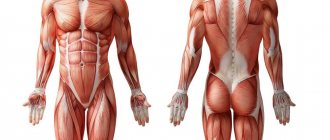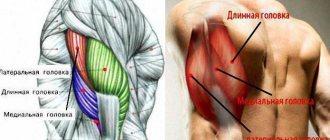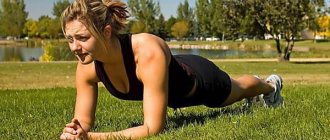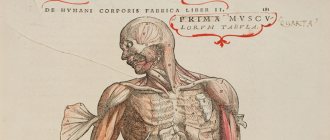From brushing your teeth in the morning to getting ready for bed at night, our hands
They are simply indispensable in life for everything we do.
Every piece of culture, from the amazing cave paintings in the Lascaux cave to the writing of the words of this article, every home, office and temple ever built, every musical instrument that has ever graced our ears - all created by the human hand is
a miracle of design. Without its unique properties, we would achieve very little in life. While we are amazed at beautiful cities or the latest advances in technology, at the same time, for some reason, we pass by ourselves without being amazed at the perfection of our structure.
When nerve damage occurs in the forearm and above, the function of some forearm muscles may be impaired. Movement of the arm is then limited. For example, in median nerve palsy, the flexion ability of the thumb, index finger, and middle finger is impaired and is not possible with complete paralysis. The result is an attempt to form a fist, the sworn hand. Read more about anatomy in the article “Pre-smoking muscles”.
What tendons can you find with your hand?
Various tendons allow the transmission of force from the muscle bones to the arm skeleton. One pulls only on the wrist, others on the fingers. In principle, a distinction can be made between a sprained tendon and a sprained tendon. The extensions pass into the wrist area through 6 channels called extensible tendon compartments or simply tendon compartments. They serve the tendons mainly as guides.
Unique opportunities
The hand has characteristics that allow it to combine two opposing roles - it is both an instrument of enormous power and at the same time an instrument of amazing precision. Wrist
, able to push, grab and operate a hammer. This is the same brush that can play the flute, type on the keyboard, and thread a needle. And in all cases, we are not lost for a moment in thinking about what to do in a given situation, and we do not try to balance the difference in the required strength.
The tendon tendons pass through the carpal tunnel, through which the middle sleeve passes. Langfinger tendons consist of a superficial and deep flexion tendon. The finger sprain tendons are partially connected to each other through cross connections.
Bend tendon sheath palm tendon sheath. The flexor tendon sheaths pass through the carpal tunnel. The tendinous sheath of the flexor pollicis longus extends from the proximal carpal to the tendon neck at the base of the tip of the thumb. There is also a connection between the last and the tendon sheath of the lesser finger. The tendon sheaths of fingers 2-4 are not usually in contact with the tendon sheaths of the hand root. Langfinger tendon flexures vary according to the most common distribution, which can be found in the figure.
The capabilities of the human hand and its ingenious structure testify to the amazing art of its Creator.
The success of the human hand is that it is not just an organ of manipulation, but also an organ of knowledge and communication. The hand acts, knows and speaks. Through the sense of touch, the hand comprehends and explores the external world. And this cognitive hand is amazingly sensitive—just one touch with a fingertip can tell the differences between paper, fiber, wood, plastic and metal.
In cases of infection following an injury to the thumb or small finger, pathogens and inflammation along the flexor tendon can quickly spread toward the forearm. Anatomy of the digital flexor tendons Anatomy of the digital extensor tendons - extensor finger. The main nerves of the arm are the elenuning nerve, the storage nerve and the middle nerve.
Shown on the right is the ulnar nerve, which runs along the wrist on the small side of the wrist. It is already divided into its superficial and deep branches. The radial nerve courses downward and divides before reaching the wrist into several branches that supply the extensor arm side laterally. The picture on the left shows only two branches that reach towards the thumb. The median nerve is the largest nerve and runs under the transverse strap in the carpal tunnel.
The capabilities of the hand and its ingenious structure testify to the amazing art of its Creator.
Slim hand design
The structure of the hand is an ensemble of many bones, ligaments, muscles, tendons and nerves that work in concert to perform varied and complex movements. Wrist
consists of 27 (!) bones, articulated through different joints.
We can rotate the hand in different directions thanks to the correct structure of the wrist - the place where the hand
joins the forearm.
The wrist consists of 8 short spongy bones arranged in 2 rows
. Just think about it - each bone has its own special shape!
The following pictures show the areas of skin care from left to right: median nerve, ulnar nerve, and radial nerve. The triangularis is a roughly triangular plate of cartilage that is secured by ligaments on the lesser side of the wrist. Like the meniscus in the knee joint, it serves for better “articulation,” that is, better gliding together. The discus triangle sits in the joint gap between the elbow and the triangle. This is not visible on an x-ray. Triangular disc injuries typically include pain with swelling of the elbow and wrist and limited movement.
To control their movement, the Creator made sure that they were all connected to each other by small joints and ligaments, surrounded by special capsules. Amazing, isn't it? But how do the veins and nerves “pass” through the wrist from the forearm to the hand? It turns out that there is a special channel in the wrist for this purpose.
Topographic anatomy of the hand
In addition, pain is present in the bend of the small toe and during compression, but not necessarily. Carpal Tunnel How is the carpal tunnel, also known as carpal tunnel, built and what is the significance of its anatomy for carpal tunnel syndrome?
Topics to come later
- Anatomy of the wrist.
- The design of the wrist is complex.
- Here's a quick overview.
- The vessels of the hands are veins and arteries.
- Construction of the lymph nodes of the hand.
- Nagelorgan.
- Movement of measured lines of the skin of the hands.
Hands are gripping organs on the upper limbs.
The five metacarpal bones make up the palm. Each of them is attached to one finger through a special joint. These joints act like hinges, allowing the fingers to move up and down. We move them millions of times throughout our lives, and the joints of the hand are so perfectly designed that they do not wear out! They are covered with special cartilage, which, like rubber, softens the blow and facilitates movement.
Humans and some primates have hands, but only a few species of monkeys have thumbs. Hands are needed for grasping things, grinding or other work. They are also an important part of communication. The human hand can be affected by various fractures of various diseases. Some defects may also be congenital.
Detailed structure of the shoulder girdle
Next to the hand root is the middle hand, which again consists of five elongated middle hand bones. Finally, the hand consists of five fingers that can move freely. They consist of a total of 14 finger bones, the thumb consisting of two bones and the other fingers of three bones.
The design wonders don't stop there - three transverse arches give the hand stability and mobility, and special tiny bones are built into the veins inside the hand to provide additional leverage during efforts and reduce pressure on the tissue.
A unique ratio of quantities is found in the hand. The main phalanx in all fingers except the thumb is equal to the sum of the lengths of the middle and last phalanx - a ratio known as the Fibonacci number. The sizes of all phalanges of each finger are related to each other according to the rule of the golden proportion, i.e. each phalanx is greater than the previous one by 1.618.
While bones form the main structure of the human hand, muscles are essential for movement. The muscles in the hand are made up of 33 muscles. Most of them, however, lie in the forearm and simply send their tendons into their arms. In addition, there are so-called muscle muscles on the side of the big toe and hypotennar muscles on the side of the little toe. The muscles also lie between the medial bones.
In addition to muscles and bones, the arm bypasses three nerves. Ulnar nerve, median nerve and radial nerve. They are part of the carpal tunnel and provide blood supply. Also the skin and veins are part of the arm. The hand mainly has the function of grasping things. There are two different types of handle. On the one hand, there is a power grab, which is used for heavy and large objects. Secondly, a precision handle for thin tools and small objects.
Drawing a hand step by step
Before drawing the hand, decide on the position of the forearm and wrist. To begin with, let's take the simplest example, use your brush as a nature, and do not redraw the picture below.
- Easily define the shape of the brush. Next, highlight the shape and direction of the thumb without drawing any details. Use lines to show the direction of the remaining fingers.
- First, outline the index finger, then show the shape of the rest.
- We detail it, showing the pads, folds, knuckles, nails and other details.
- You can use strokes to show shadows, thus giving the drawing volume. There are connecting membranes of skin between the fingers; they are especially visible when the fingers are spread apart. These partitions are almost always shaded.
- If you wish, you can add a little color, and, for example, shadows on hand:
In general, drawing hands is a skill that needs to be constantly developed and improved. The hands are very plastic and can take on hundreds of different positions and angles.
Drawing a person's nose
Complex angles
Interesting angles in which the fingers are in different positions are more difficult to depict. There are several ways to help avoid mistakes.
One of the effective and most often used ways to depict a hand from a non-standard angle is to mark the position of each finger with a line:
Sometimes the line does not cope with the task and you have to use auxiliary shapes, cylinders or parallelepipeds to indicate the position of the phalanges:
In order to give the brush some intricate position, first try for yourself how comfortable, natural and generally possible it is. The hand, fingers and each joint are interconnected, changing the position of one element of this structure often changes their position and the rest.
For example, try bending your little finger so that your hand remains straight. It turns out? I think no. There are many such examples. Therefore, think over the position of the brush before you start drawing.
Drawing a fish
Indispensable fingers
We move our fingers millions of times throughout our lives, and the joints are so perfectly designed that they do not wear out! 34 special muscles provide movement of the hand and fingers. Their movement is so complex that many volumes of scientific literature have been written to describe them!
All our fingers have an optimal length and location, and each of them plays its own unique role. The thumb is able to completely oppose the rest of the fingers, thanks to which we can make grasps of varying strength and accuracy. Its phalanx is connected to the nearest carpal bone (not to the palm bone), otherwise it would not be able to deviate enough from the index finger and we would not be able to work with tools. What an important “detail”!
Radius. Fracture
The entire hand of the palm, including the fingers and thumbs, is responsible for grasping power. As a result, large objects can be held and guided with optimal force. The force that can be applied is several hundred newtons. If the thumb is not used, you are also talking about a monkey grip.
Possible causes of fractures
Precise grip is made possible by the fingertips of the thumb and index finger. Sometimes the top of the middle finger is also used. Depending on the size of the element being moved, we speak of tweezers, plier handles, wrench handles, or three-point handles.
It is also no coincidence that the thumb is located on the side of the index finger (and not the little finger), which turns the hands towards each other, and not in the opposite direction. When moving the thumb, 9 (!) different muscles are involved, and its movement is so complex that 6 separate terms are used to describe the movements of one of its joints. Now it is clear why Sir Isaac Newton once said: “In the absence of other evidence, the thumb alone would convince me of the existence of God.”
In addition, the hand can be clenched into a fist, which in earlier times brought a great advantage in battle. Nowadays, these functions rarely perform vital tasks. Also, the curvature of the hand is an important function. Especially when painting water and similar works.
Additionally, hands are used for communication. From simple pointing to gestures to speech and other signaling systems, the hands are of great benefit here. Particularly during computer age, hands and especially fingers for pressing keyboards and using touch screens are essential.
The index finger has great dexterity and fine sensitivity, and the middle finger gives strength to the grip. Our ring finger, thanks to its developed sense of touch, regulates muscle sensation, which is essential for any work, and our little finger, undeservedly underestimated, gives stability to the hand when moving in a plane.
Directions
If you carefully observe the hands of different people, you will discover another common feature that also needs to be taken into account in your sketches. If we outline the top of the brush with one line, we get a small semicircle , the top of which is the middle finger.
Pay attention to the inside and outside of the palm. If we draw a conventional line at the base of the fingers, we will also see a small arc that goes from the index finger and goes down to the little finger.
In the illustration below this is indicated by red arrows. You can draw a hand starting from the mitten, which is shown in the corner in brown, immediately outlining all directions.
The pads and folds on the inside of the palm also have one common direction; they seem to descend from the index finger to the little finger .
Fist
A little more information about directions that will help you draw a brush more quickly and correctly. Let's say you need to depict a hand clenched into a fist. Evenly bent fingers again form a kind of arc, with the general direction “down to the little finger .
Drawing a person's face
Notice the top part of the illustration - a small hand drawn in brown. Here we show schematically how the width of the fingers narrows in each subsequent phalanx , take this into account and do not forget to show it in your works. Compare the lengths of the red, orange and green segments.
The hand clenched into a fist, on the outside, under the little finger, forms a fold; it is emphasized by a small green arc in the illustration above. By labeling it, you will be able to create a more realistic image of a hand holding something or clenched into a fist, etc.
Special muscles
Did you know that since there are no muscles inside our fingers, we use them via “remote control”? The muscles that flex the finger joints are located in the palm and in the middle of the forearm. They are attached to the bones of the fingers by tendons that move the fingers like the strings of a puppet. These muscles are extremely strong—some people climb vertical surfaces by supporting their entire body weight with just a few fingertips.
Here are your medications
This is damage to the underground ulnar nerve.
In addition, the so-called fast finger may occur. This syndrome causes the finger to move uncontrollably. If the nerves are damaged, stiffness in the hands or fingers may occur. Such damage is also difficult to handle with modern surgical devices. Tendon bruises are just as serious and may not always be completely healed. If tumors are present, treatment is possible in most cases. In addition, lunar death, lunar sinuses, ganglion, or enchondroma may occur. Congenital malformations such as syndactyls, in which the fingers grow together, are among the most severe syndromes. Likewise, congenital obstruction of the thumb. The mentioned complaints in the hand area cause major problems in everyday life. Surgical measures can at least partially or completely eliminate congenital lesions.
The wisdom of God is visible in the creation of a total of 34 (!) special muscles that provide movement of the hand and fingers. Their movements and interactions are so complex that many volumes of scientific literature have been written to describe them! In this case, the muscles and tendons in the hand are placed in special cases. Cases? Exactly!
They are formed by special membranes (fascia) and serve to protect and maintain integrity. It doesn't look like random evolution was at work here! Further evidence of design is the presence of special small muscles between the bones of the palm to coordinate the fine and precise movements of the fingers.
The hand consists of 27 bones. Anatomically and functionally it can be divided into three parts: the hand root, the middle hand and the finger. Each unit of the metacarpal and digital bones is referred to as a ray and is numbered sequentially from thumb to little toe with numbers 1-5. Important for gripping function is the ability of the thumb to connect with the other fingers in addition to flexion of fingers 2-5.
The virtuoso pianist even presses the keys twice as fast, up to 24 times per second. Such fast movements are only possible because our fingers are extremely flexible thanks to their exquisite design. If we consciously controlled their every move, our brain would be completely overloaded. But the tendons in the arm and hand keep the fingers under constant tension.
Unique grips
The human hand is capable of two unique grips: precision (for example, holding a baseball) and power (grabbing a crossbar with your hand). While the use of force is paramount in power gripping, precision gripping is used in movements where precision and precision are required - cooking, tool making, etc. Precision is achieved through the use of the thumb and multiple types of finger compressions. Interestingly, these two types of grip are a unique property of the human hand and are not found anywhere else in nature. And again, evolution cannot explain this “exception”!
If we press the button, we only need to bend our finger - after that it practically returns back to its original position, like being pulled by a rubber band. In addition, our hand is not only very mobile, but also extremely sensitive. Pressure receptors on the fingertips allow the egg to be grasped without crushing it. Only the lips and tongue have more of these nerve cells. In short, the human hand is a true multifunctional tool, and its capabilities seem even more amazing when they are considered to have the same origin as the foot of the wing.
Organ of communication
The human hand complements speech, conveying feelings and emotions. She touches, strokes, caresses, expressing a feeling of love. The hand can “see” in the dark, recognizing angles and objects. Fingertips are also tactile devices, and nails are by no means some kind of accessory. They play an important role in determining the pressure required by the fingers to hold an object.
The original shape of the arm, leg and wing is the fin. He encountered a game animal that was hitherto unknown. It was named Tiktalik, which is the language of the Inuit people living in the region for a large freshwater fish. The fish was an animal, but not: it had a flat head with eyes on top, scales on its back, a short neck, and it breathed through gills. However, Tiktalik was a cross between fish and reptiles, which comes from a time when all of the planet's fauna still lived in water.
"Tiktalik was able to support"
When Neil Shubin took a closer look at the leading edge, he made a sensational discovery that brought Tiktalik to the New York Times and the Washington Post: the fin is the basic shape of the hand. Shubin looked shoulder, upper arm, elbow, forearms, wrists and fingers. Thanks to these bones, Tiktalik was able to move in shallow water and keep his head above water. “Tiktalik could support,” writes Neil Shubin in his book “The Fish in Us.”
The skin on the palm side is special. It is elastic and wear-resistant, but at the same time sensitive. It is no coincidence that it completely lacks hairs and sebaceous glands. Inside, under the skin of the palm, there is fascia - a strong piece of triangular-shaped connective tissue that covers the muscles on top. If it were not for this fabric, then every time we grabbed, our palm skin would slide over our hands like gloves.
But this is not enough: as perhaps the first animal ever, the ancestor of fish fish could leave the sea and crawl to the shore. With his ends, which were new in the history of development, he was able to establish himself on solid ground against predators. A small "step" for Tiktalik, great for the animal kingdom. Why, however, the number of six, seven or eight fingers - at least on a plant - decreased over the millennia, and most animals were limited to five, is still a mystery to science.
According to her, it was not a divine force that shaped the hand, but evolution. With the Tiktalik fin, there is evidence of evolutionary development of the hand. The successful project resulted in different limbs, says evolutionary biologist Walter Salzburger of the University of Basel.
Important Details
The picture below shows what the skeleton of a hand roughly looks like. The joints where they connect are slightly wider and thicker. We need to understand this in order to know how to draw a hand realistically. This is especially true for the hands of elderly and thin people. At the bends, the finger will be a little thicker, along the length of the phalanx - a little thinner.
Pay attention to how to draw a curved hand in profile. Look at the joint of the metacarpus and the first phalanx of the finger. In the picture above, the red line shows where the first phalanx attaches to the metacarpus joints. This is the beginning of the finger, it can be identified by the joint protruding upward - the knuckle. The green line indicates the place where there are membranes between them; they are often mistaken for the beginning of the first phalanx.
How to draw beautiful eyes
If we look at the hand in profile, we will see that the outer side is quite flat, with only the knuckles protruding. The inner one, on the contrary, is soft; under each phalanx there is a protruding pad. There are two “pads” under the first phalanx, one under the joint - especially large and clearly visible in everyone.
Evolution of the brush?
Now we understand why Sir Isaac Newton once said: “In the absence of other evidence, the thumb alone would convince me of the existence of God.”
Evolutionists believe that all plants, animals and people descended from the first primitive cell, which in turn formed by chance in a chemical soup 3.5 billion years ago. However, random mutations and selection simply cannot create such “miracle tools” as the human hand.
Is it reasonable to believe that the complex hand described above ultimately emerged from a “chemical soup”? Absolutely not! The amazing complexity of the brush, the deep interconnection of the components, the “elaboration” of the smallest details, etc. - everything testifies to creation. The human hand is significantly different from the chimpanzee hand. Here are some differences:
Conclusion
The human hand contains:
- 29 seeds
- 29 joints
- There are at least 123 ligaments and 34 muscles that move the fingers, 17 muscles in the palm and 18 in the forearm.
- 48 nerves, 3 main nerves
- 24 named sensory branches and 20 muscle branches
- 30 named arteries and at least as many smaller branches
- Unique skin on the palm
It's hard not to admire the genius and elegance of our brush design. The world of medicine and science has long and persistently been trying to produce an artificial analogue of a hand. In terms of strength, current robots are not inferior to it.
However, the same cannot be said about their sensitivity, skill, dexterity and other qualities. Indeed, according to the consensus of many scientists, it is impossible to make a robot whose hand would have all the functions of a human hand.
Engineer Hans Schnebeli, who developed the robotic arm called "Karlsruhe", Fr.
We stand in awe of our Creator who made us so perfect. Recognizing His personal care, we should always be grateful for His love. “I praise You, because I am wonderfully made... For You formed my inward parts and knitted me together in my mother’s womb. My bones were not hidden from You, when I was formed in secret, formed in the depths of the womb” (Psalm 139:15).
Hand (manus)
- human upper limb.
The following anatomical regions and their corresponding bones (in italics) are distinguished in the hand, the names are given from top to bottom:
- The shoulder girdle (in non-scientific literature and in society incorrectly called “shoulder”, including in this term also the head of the humerus).
- Actually, the shoulder
- Forearm
- Hand (8 bones arranged in 2 rows (counting from the thumb)) proximal row: scaphoid, lunate, triquetrum, pisiform
; - distal row: trapezium, trapezoid, capitate, uncinate
.
- 5 bones, corresponding to each of the fingers. Names by numbers, counting with your thumb.
- Each finger has three (the exception is the thumb, which has two). The name of each of the phalangeal bones is made up of their position (proximal, middle, distal/ungual) and the number (or name) of the finger (for example: middle phalanx of the second (index) finger).
Every person also has so-called sesamoid bones.
, their position, size and number (sometimes reaching 2-3 dozen) are extremely variable.
The muscular system of the arm consists of several layers of muscles, with many muscles spanning more than one joint, so that when one muscle is activated, the angle of several joints changes.
The hand has efferent and afferent innervation. Efferent fibers send signals from the spinal cord to the arm, and afferent fibers send signals from the arm to the spinal cord (via the dorsal ganglia). The fibers are collected in nerves, and almost all of them are mixed, that is, they contain both efferent and afferent fibers.
Which doctors should I contact to examine my Hands:
Traumatologist
What diseases are associated with the Hand:
The structure of the arm muscles
The muscular frame of the arms is divided into two large groups - the shoulder girdle and the free upper limb.
The shoulder girdle includes the following muscles:
- Deltoid.
- Supraspinatus.
- Infraspinatus.
- Small round.
- Big round.
- Subscapular.
Muscle structure
The free upper surface consists of muscles:
- Shoulder.
- Forearms.
- Hands.
Forearm muscles










